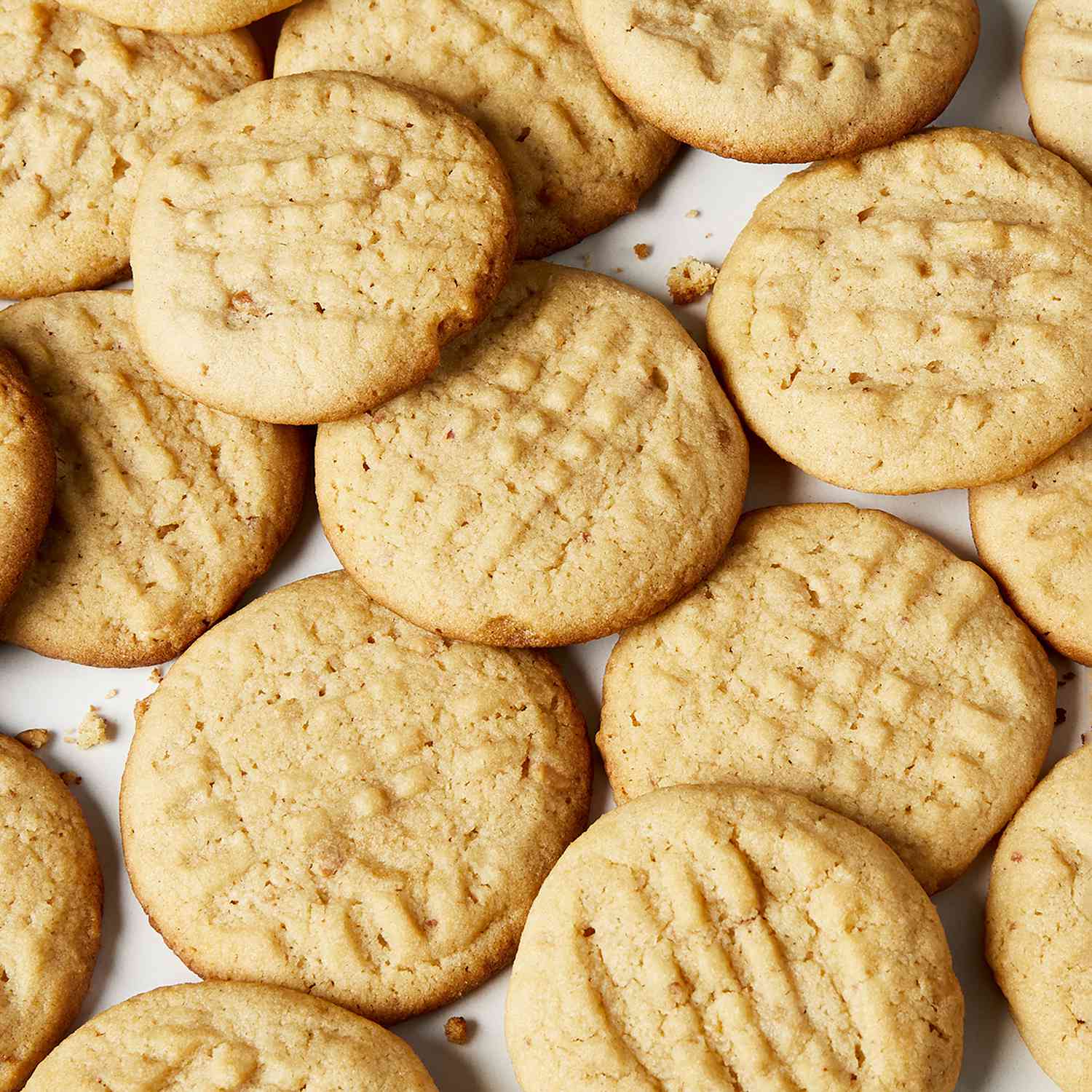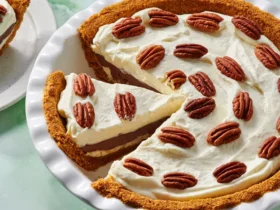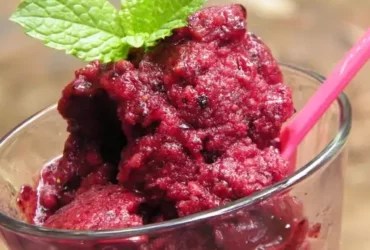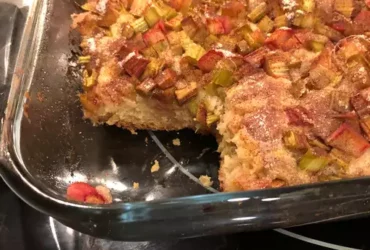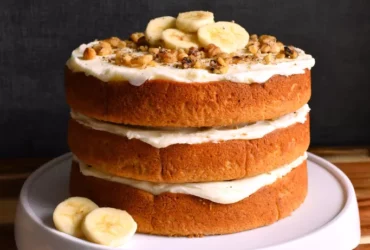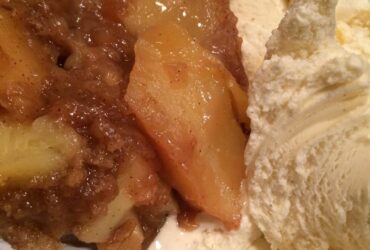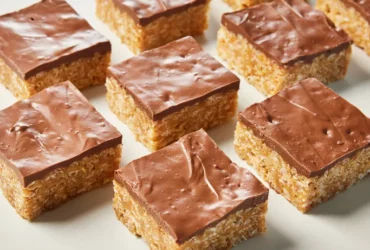Ingredients
Creamy Delight
The secret to achieving that perfect balance of flavors and textures in a classic peanut butter cookie lies within its ingredients. At the heart of this beloved treat are the primary players:
- Peanut Butter: The star of the show, creamy or crunchy, it’s up to personal preference. For an authentic taste, look for natural peanut butter with only peanuts and salt as ingredients. Some brands may add stabilizers or hydrogenated oils, so be mindful of your selection.
- Granulated Sugar: This adds a touch of sweetness that complements the savory aspect of peanut butter. Confectioner’s sugar can also be used to achieve a lighter coating on top, but granulated is essential for texture and flavor balance in the dough itself.
- Brown Sugar: Adding depth and richness to your cookies, brown sugar pairs wonderfully with peanut butter. It contains molasses that enhance the overall flavor profile without adding extra liquid content like honey or maple syrup might.
- Eggs: Whole eggs provide structure, moisture, and a touch of leavening power within each cookie. The fat from the yolk helps maintain chewiness while also acting as an emulsifier to mix peanut butter’s oil with other ingredients smoothly.
- Baking Soda: This acts as both a leavening agent and pH adjuster in the dough, contributing to lightness and balance of flavors within each cookie. Ensure you use baking soda specifically designed for baked goods rather than that used in cleaning products!
- Flour: Using all-purpose flour ensures tenderness while maintaining structure. It’s crucial not to overmix when combining ingredients as this can cause toughening, especially with the addition of peanut butter.
- Vanilla Extract: Optional but highly recommended for a classic cookie taste experience. A hint of vanilla complements peanut butter perfectly and provides an unmistakable aroma during baking.
- Pinch of Salt: The salt balances out sweetness by highlighting the savory flavor within the dough, often getting lost behind sugary additions if not present in sufficient amounts.
To create these cookies that will be loved for years to come, combine peanut butter and sugars (granulated and brown) first with a large spoon until smooth. Beat in the egg thoroughly to avoid any lumps, followed by baking soda. Mix on low speed if needed for best results after incorporating flour. Finally, add vanilla extract or salt according to personal preference before rolling the dough into balls.
The foundation of any exceptional peanut butter cookie lies in its ingredients, which are carefully selected to harmonize with one another in a symphony of flavor and texture.
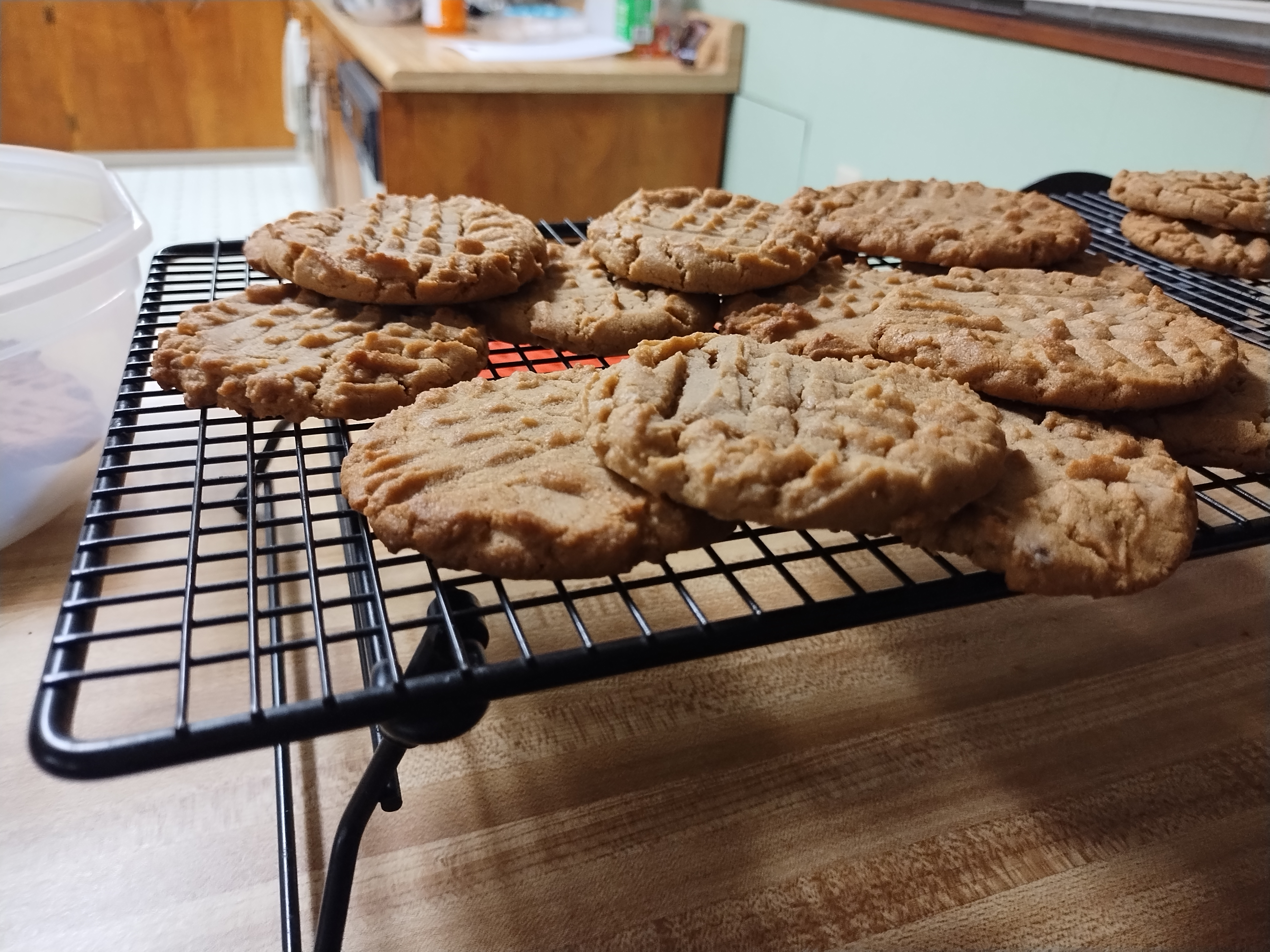
Here’s what you’ll need for this classic recipe:
- 2 1/4 cups all-purpose flour: This is the backbone of our cookie, providing structure and helping everything hold together.
- 1 teaspoon baking soda: A pinch of baking soda helps to balance acidity and promote a light, tender crumb.
- 1 teaspoon salt: Believe it or not, a small amount of salt enhances flavors and prevents the cookies from tasting bland.
- 1 cup peanut butter: This is where the magic happens. Choose a creamy or crunchy peanut butter to suit your taste.
- 1/2 cup unsalted butter, softened: Make sure this isn’t too cold; you want it easy to mix with the other ingredients.
- 3/4 cup granulated sugar: White sugar adds sweetness without contributing an overpowering flavor.
- 1 egg: Large or extra-large eggs work best for this recipe – they help bind everything together.
Optional: chopped peanuts or chocolate chips to add extra texture and excitement
2 1/4 cups allpurpose flour
All-purpose flour serves as the primary base ingredient in this recipe for classic peanut butter cookies, providing structure and texture to the finished treats.
The use of 2 1/4 cups of all-purpose flour ensures that the dough remains cohesive while also allowing it to hold its shape during baking. This volume of flour also enables the development of a satisfying crunch on the outside of the cookies, which provides an appealing contrast to their soft interior.
It is worth noting that using only 2 1/4 cups of all-purpose flour may result in slightly fragile or crumbly edges, but this can be mitigated by incorporating a higher proportion of peanut butter or adding in extra fat sources such as oil or melted chocolate. However, for those seeking an authentic experience with classic peanut butter cookies, this volume of flour is often preferred.
In terms of the type of all-purpose flour used, cake flour may offer superior texture and tenderness to the finished product, but this ingredient can be substituted only in emergency situations due to its finer consistency. In contrast, bread flour adds too much density for a classic peanut butter cookie.
Some recipes recommend substituting up to 25% of the total flour with ground oats or whole wheat flour, which may enhance the nutritional profile of these treats while also providing added texture and interest through their slightly coarser consistency. However, such substitutions should be approached with caution as they can result in cookies that are less tender and more prone to spreading during baking.
Another common technique involves using a combination of white all-purpose flour and whole wheat flour for enhanced fiber content, but this approach may introduce unwanted nutty or earthy undertones. When considering such substitutions, it is advisable to monitor the total ratio of flours while also adjusting the liquid content accordingly to prevent dryness or sogginess.
It’s worth noting that in order to maintain the characteristic spread and crisp edges of classic peanut butter cookies, these treats should be baked at a moderate temperature (typically between 375-400°F) for 10-12 minutes. The exact baking time will depend on factors such as cookie size and pan material.
Overall, using 2 1/4 cups of all-purpose flour in this recipe creates a delicate balance that supports the characteristic flavors and textures of classic peanut butter cookies while ensuring that these treats maintain their signature crunch on the outside and softness within.
1 teaspoon baking soda
The classic peanut butter cookies recipe typically involves a combination of basic ingredients, with one crucial component being 1 teaspoon baking soda.
Baking soda, also known as sodium bicarbonate, serves several purposes in the recipe:
- It helps to react with acidic ingredients like buttermilk or brown sugar and release carbon dioxide gas. This reaction is what causes the cookies to rise.
- It has a mild abrasive quality that can help break down the peanut butter’s emulsion, allowing it to mix more smoothly with other ingredients.
The reason for including baking soda in this classic peanut butter cookie recipe is two-fold:
- It helps to create a tender and moist texture by releasing carbon dioxide gas during baking.
- It aids in balancing the flavors of the cookies, particularly when paired with the rich, nutty flavor of peanut butter.
Using high-quality baking soda is essential for achieving the desired results. It’s recommended to use a fresh container or scoop your baking soda from its storage area immediately before measuring it out to ensure accuracy and optimal performance in the recipe.
Incorporating 1 teaspoon of baking soda into this classic peanut butter cookies recipe helps to create a delicious, chewy, and well-balanced cookie that will please even the pickiest eaters.
1 teaspoon salt
The classic peanut butter cookies recipe requires a few key ingredients to bring out the flavor and texture of these beloved treats.
The following are the essential ingredients:
- 1 cup peanut butter (creamy or crunchy, whichever you prefer)
- 1/2 cup unsalted butter, softened
- 1/2 cup granulated sugar
- 1 egg
- 1 teaspoon vanilla extract
- 1 teaspoon salt (this is the ingredient we’re focusing on)
- 2 1/4 cups all-purpose flour
- Optional: chopped peanuts or chocolate chips for added flavor and texture
The role of salt in baking is multifaceted:
- Salt enhances the flavors of other ingredients, bringing out the sweetness of the sugar and the nuttiness of the peanut butter.
- Salt helps to control yeast growth (although this recipe doesn’t contain yeast) and can help with texture and browning.
- A small amount of salt can balance out the richness of the peanut butter, preventing the cookies from tasting too greasy or overpowering.
When using salt in baking, it’s essential to use the right type:
- Iodized salt is not recommended for baking as it can give a soapy or metallic taste to your finished products.
- Sea salt or kosher salt are great options for baking due to their coarser texture and more nuanced flavor profiles.
In summary, using the right amount of salt in this classic peanut butter cookies recipe is crucial to achieving the perfect balance of flavors and textures. The 1 teaspoon of salt called for in this recipe will help bring out the natural sweetness of the peanut butter and sugar, creating a deliciously balanced cookie that’s sure to please even the most discerning palates.
1 cup peanut butter (creamy or crunchy)
Peanut butter is a fundamental ingredient in many baked goods, including classic peanut butter cookies. When it comes to selecting the perfect peanut butter for this recipe, you have two options: creamy or crunchy.
Creamey peanut butter has a smooth and rich texture that works beautifully with the sugar, eggs, and flour in the cookie dough. It adds a deep and nutty flavor that is characteristic of peanut butter cookies. If you prefer the taste of creamy peanut butter, you can use it as a base for your cookies.
Crunchy peanut butter, on the other hand, has a coarse texture that provides a delightful contrast to the smoothness of the sugar and eggs. The chunky peanuts add a satisfying crunch to each bite, making them perfect for those who love a little extra texture in their cookies. If you prefer the texture of crunchy peanut butter, you can also use it as a base for your cookies.
In either case, be sure to choose a high-quality peanut butter that is fresh and has not been sitting on the shelf for too long. Old or rancid peanut butter can ruin the flavor of your cookies and make them unpalatable. Look for natural peanut butters with minimal added ingredients and no hydrogenated oils.
When measuring out 1 cup of peanut butter, be sure to use a measuring cup that is specifically designed for dry ingredients like peanut butter. This will help ensure that you get an accurate measurement and avoid over- or under-measuring the ingredient.
In terms of alternatives to peanut butter, you can also try using other nut butters like almond butter or cashew butter. However, keep in mind that these butters may have a different flavor profile than peanut butter and may not work as well in this recipe.
Overall, the choice between creamy and crunchy peanut butter is largely a matter of personal preference. Both options will yield delicious cookies, so feel free to experiment with both and see which one you prefer!
1/2 cup unsalted butter, softened
In a classic peanut butter cookies recipe, one crucial ingredient plays a pivotal role – 1/2 cup unsalted butter, softened. This is not just any type of butter; it’s specifically unsalted, meaning it doesn’t contain any added salt that can alter the flavor profile of the final cookie.
The use of unsalted butter is deliberate in this recipe to allow the natural sweetness and nutty flavor of peanut butter to shine through. Salted butter could potentially throw off the balance of flavors, resulting in a cookie that tastes overly salty or bitter.
So, what makes 1/2 cup of softened unsalted butter so essential? Here are some key characteristics:
- Quantity: A mere half cup may seem like a small amount, but trust the recipe – it’s precisely this quantity that allows for a perfect balance between peanut butter and butter.
- State: The butter should be softened to room temperature. This is crucial as cold butter can result in cookies that spread excessively during baking, leading to an unappealing texture.
- Unsalted status: As mentioned earlier, the absence of added salt in this type of butter gives it a neutral flavor profile that complements the peanut butter without overpowering it.
The importance of using unsalted butter in classic peanut butter cookies can’t be overstated. It’s an essential element that combines with other ingredients to create a treat that’s both delicious and visually appealing.
1/2 cup granulated sugar
Granulated sugar is one of the essential ingredients used in classic peanut butter cookies. It plays a crucial role in adding sweetness and texture to these tasty treats.
In this particular recipe, you’ll need 1/2 cup of granulated sugar. This amount might seem small compared to other recipes that use more sugar, but trust us – it’s the perfect balance for classic peanut butter cookies.
Granulated sugar is a type of sucrose made from sugarcane or sugar beets. It’s also known as table sugar due to its fine texture and powdery appearance. Its primary function in baking is to provide sweetness, but it also helps to strengthen the dough and improve browning.
The granulated sugar you use for this recipe should be fresh and not past its expiration date. Expired sugar can lose its flavor and potency, which can affect the overall taste of your cookies.
When measuring out 1/2 cup of granulated sugar, make sure to level off the top with a flat utensil or knife. This ensures you’re using exactly the right amount for the recipe. Too much sugar can result in an overly sweet cookie, while too little might leave them lacking in flavor.
Granulated sugar dissolves easily in liquid ingredients like peanut butter and eggs, which makes it an ideal addition to this classic cookie recipe. The sugar helps to distribute the flavors evenly throughout the dough, resulting in a deliciously balanced taste experience when you take your first bite.
It’s worth noting that granulated sugar can be replaced with other sweeteners like brown sugar or honey, but these alternatives will change the flavor profile of the cookies slightly. Granulated sugar is the traditional choice for this recipe because it provides a clean and neutral sweetness that complements the peanut butter beautifully.
1 large egg
The classic peanut butter cookies recipe relies heavily on a few key ingredients, one of which is a single large egg. Here are some interesting facts and details about 1 large egg in the context of this recipe:
What is the purpose of an egg in baking?
In baked goods like peanut butter cookies, eggs serve multiple purposes. They contribute moisture, richness, and tenderness to the final product. Eggs also act as a binding agent, helping to hold ingredients together and create a cohesive texture.
Chemical composition of 1 large egg
- Protein content: About 6-7 grams of protein per egg, primarily in the form of ovalbumin, ovotransferrin, and ovomucoid.
- Fat content: Approximately 5 grams of fat, mainly as triglycerides. Egg yolks are particularly rich in lipids.
- Moisture content: Roughly 70-80% water content per egg.
- Carbohydrate content: Negligible amounts of carbohydrates, mainly as a component of the yolk’s mucoproteins and glycoproteins.
How does an egg impact peanut butter cookies?
In the context of this recipe, 1 large egg helps to:
- Create moisture: The egg contributes to the overall softness and chewiness of the cookies.
- Add richness: The egg’s fat content enhances the cookie’s texture and mouthfeel.
- Enhance browning: Egg yolks contain lecithin, which can promote browning reactions during baking.
While the role of an egg in baking is multifaceted, its contribution to the classic peanut butter cookies recipe cannot be overstated. The moisture and richness provided by this single large egg are crucial for achieving the desired texture and flavor profile in these beloved treats.
The ingredients required for making classic peanut butter cookies are essential components that contribute to their unique flavor, texture, and aroma.
Essential Ingredients
- Peanut butter: This is a crucial ingredient in the recipe, providing rich flavor and moisture. Choose creamy peanut butter for the best results, as it creates a tender and chewy texture.
- Butter: Unsalted butter is used to enhance the flavor of the cookies while maintaining their moistness. Softened butter makes it easier to mix with the other ingredients.
- Brown sugar: This ingredient adds a deeper and richer flavor compared to white sugar, making the cookies more complex and satisfying. Brown sugar also contributes to their chewy texture.
- Granulated sugar: White sugar provides sweetness and helps balance the flavors in the cookie dough.
- Eggs: Large eggs are used as a binder, providing moisture and structure to the cookies. Beaten eggs help create a smooth and consistent texture.
- Vanilla extract: This adds a subtle and sweet flavor that complements the peanut butter and sugar. A hint of vanilla enhances the overall taste experience.
- Salt: A pinch of salt helps balance the sweetness in the cookies and brings out their natural flavors, including those from the peanut butter and brown sugar.
Optional Ingredients
- Baking soda: This ingredient can be used to help leaven the cookies and give them a light texture. However, it may affect their flavor slightly, so use it sparingly.
- Chocolate chips or chopped nuts: These add variety to the classic recipe and create interesting textures. Choose your preferred mix-ins wisely, as they can change the character of the cookies significantly.
When preparing these ingredients, keep in mind that accuracy is crucial when it comes to measuring them. Use digital scales or measuring cups to ensure you have the right amounts for each component. This attention to detail will help create delicious and consistent results every time you bake classic peanut butter cookies.
Instructions
Cookie Magic
The art of creating classic peanut butter cookies is a true delight for those who appreciate the simplicity and charm of traditional baking.
At its core, Cookie Magic involves understanding the fundamental components that come together to create these beloved treats: a perfect balance of crunch and chew, a rich, nutty flavor, and an irresistible aroma that wafts from the oven.
The classic peanut butter cookie recipe is built around a few key ingredients, each playing a crucial role in the creation of this iconic dessert:
- Peanut Butter: The star of the show, peanut butter provides the distinctive flavor and creamy texture that defines these cookies. Look for natural peanut butter with minimal added oils to achieve the best results.
- Butter: Unsalted butter adds a richness and tenderness to the cookies, while also contributing to their golden brown color.
- Sugar: White granulated sugar provides sweetness and helps balance out the savory flavor of the peanut butter. Brown sugar can be used for added depth, but use it sparingly as it can overpower the other flavors.
- Eggs: Whole eggs or egg yolks serve as a binding agent, helping to hold the cookies together while adding moisture and richness.
The process of mixing these ingredients is where Cookie Magic truly comes alive. A gentle creaming of the butter and sugar, followed by the addition of peanut butter, eggs, and finally flour, creates a smooth, pliable dough that’s perfect for shaping into balls or logs.
To achieve that perfect crunch, it’s essential to underbake slightly – take the cookies out when they’re lightly golden on the edges but still pale in the center. This will help preserve their chewiness while ensuring they don’t spread too much during baking.
The art of following instructions is a crucial aspect of baking, especially when it comes to creating classic treats like peanut butter cookies.
Instructions serve as a roadmap for achieving success in the kitchen, guiding bakers through each step with precision and clarity.
For those who are new to baking or looking to refine their skills, following a set of carefully crafted instructions can make all the difference between a mediocre outcome and a masterpiece.
Why Instructions Are Essential
Baking is an art that requires attention to detail and adherence to specific techniques to produce consistently delicious results.
Ingredients, measuring units, and steps must all be considered when developing a recipe, as they play crucial roles in determining the final product’s texture, taste, and overall appearance.
The Benefits of Following Instructions
- Faster Results:Following instructions helps bakers work more efficiently in the kitchen, allowing them to complete tasks quickly and accurately.
- Improved Consistency:Instructions provide a clear outline of what needs to be done at each stage, resulting in consistent outcomes that meet expectations.
- Reduced Errors:Adhering to instructions minimizes the likelihood of mistakes and errors, which can save time, money, and frustration in the long run.
The Classic Peanut Butter Cookies Recipe: A Guide to Following Instructions
For those looking to try their hand at classic peanut butter cookies, following these instructions will ensure a delightful outcome:
- Preheat the oven to 375°F (190°C) and line a baking sheet with parchment paper.
- In a large bowl, whisk together the peanut butter, granulated sugar, brown sugar, and salt until well combined.
- Add the eggs one at a time, beating thoroughly after each addition, until smooth.
- Gradually mix in the flour until just combined, being careful not to overmix the dough.
- Roll the dough into balls and place them onto the prepared baking sheet, leaving about 2 inches (5 cm) of space between each cookie.
- Bake for 10-12 minutes or until lightly golden around the edges.
By following these instructions carefully, even the most novice bakers will be able to create classic peanut butter cookies that are sure to delight family and friends.
Preheat oven to 375°F (190°C)
- To prepare a delicious batch of classic peanut butter cookies, follow these step-by-step instructions:
Preparation
- Mix 1 cup (2 sticks) of unsalted butter and 1/2 cup of creamy peanut butter in a large mixing bowl until smooth and well combined.
- Add 3/4 cup of granulated sugar, 3/4 cup of brown sugar, and 2 large eggs to the mixture. Blend until a thick dough forms.
Adding Leavening Agents
In a separate bowl, whisk together:
- Baking soda (1 teaspoon)
- Salt (1/4 teaspoon)
Combining Ingredients
- Add the leavening agents to the peanut butter mixture and mix until well combined.
- Gradually add 2 1/4 cups of all-purpose flour, mixing until a dough forms that is not too sticky or dry.
Chilling the Dough
- Cover the dough with plastic wrap and refrigerate for at least 30 minutes to allow the flavors to meld together.
Baking the Cookies
- Preheat oven to 375°F (190°C).
- Using a cookie scoop or tablespoon, drop rounded balls of dough onto an ungreased baking sheet, leaving 2 inches of space between each cookie.
- Bake for 10-12 minutes, or until the edges are lightly golden brown. The centers may be slightly soft.
Cooling and Serving
- Remove the cookies from the oven and allow them to cool on the baking sheet for a few minutes before transferring them to a wire rack to cool completely.
- Serve warm, or store in an airtight container at room temperature for up to 5 days.
Mix flour, baking soda, and salt in a separate bowl
To begin making delicious Classic Peanut Butter Cookies, we need to prepare the dry ingredients that will give our cookies their unique flavor and texture.
In a separate bowl from where you’ll mix the wet ingredients, combine the following dry ingredients:
- 2 1/4 cups of all-purpose flour
- 1 teaspoon of baking soda
- 1 teaspoon of salt
Mix these ingredients together until they’re well combined and there are no lumps. This will ensure that your cookies turn out light and fluffy.
Make sure to mix the dry ingredients thoroughly, as this will help distribute the baking soda and salt evenly throughout the dough. A thorough mixing of the dry ingredients is crucial in ensuring that your Classic Peanut Butter Cookies have the right balance of flavors and textures.
Cream peanut butter, butter, and sugars until smooth
- The first step in preparing this classic recipe is to preheat your oven to 375 degrees Fahrenheit (190 degrees Celsius). It’s essential to ensure that your oven has reached the correct temperature before proceeding.
- Next, you will need to prepare a mixing bowl and whisk or electric mixer for creaming together the peanut butter and sugars. To begin, use an electric mixer on medium speed to combine 1/2 cup of creamy peanut butter with 1/4 cup of white granulated sugar and 1/4 cup of light brown sugar.
- Continue mixing until smooth, scraping down the sides of the bowl as necessary to ensure everything is fully incorporated. The mixture should become light and fluffy as you cream it.
- Once the peanut butter mixture has reached a smooth consistency, stop the mixer and add 1/2 cup of softened unsalted butter. Continue mixing on low speed until the butter has been fully incorporated into the peanut butter mixture.
Add 1 teaspoon of pure vanilla extract to the mixture and mix it in thoroughly. Make sure not to overmix at this stage.
To proceed, you will need a separate bowl for whisking together the dry ingredients. In this bowl, combine:
- 2 1/4 cups of all-purpose flour
- 1 teaspoon of baking soda
- 1 teaspoon of salt
Whisk these dry ingredients together until they are evenly combined and there are no lumps.
Add the dry ingredient mixture to the wet peanut butter mixture in three parts, mixing thoroughly after each addition. Make sure not to overmix at this stage.
The dough should now be ready for use. You can either refrigerate it for up to 24 hours or proceed with baking the cookies immediately.
Add egg and mix until combined
In the process of making classic peanut butter cookies, it’s essential to follow a set of instructions that ensure the final product turns out delicious and visually appealing. This includes accurately measuring ingredients, using the right techniques for mixing and incorporating them into the dough, and controlling the baking time to achieve the perfect texture.
One critical step in this process is the addition of eggs. Eggs play a multifaceted role in baked goods – they not only add moisture but also help bind ingredients together, providing structure to the cookies. When adding an egg to the peanut butter mixture, it’s crucial to ensure that it’s fully incorporated into the dough.
To achieve this, the next step is to “mix until combined.” This instruction signifies the point at which you need to use a gentle and thorough mixing method to blend all the ingredients together. The goal here is not to overmix, which can result in a tough cookie texture, but rather to create a smooth consistency that allows the flavors to meld together.
When mixing until combined, it’s essential to consider both the tools you’re using and the force with which you’re applying them. Overmixing can be caused by vigorous mixing techniques or the wrong tool for the job – such as using a stand mixer instead of hand-mixing when only a gentle touch is required.
Considering these factors helps ensure that you end up with cookies that are not just tasty but also have a delightful texture. Mixing until combined isn’t just about incorporating all the ingredients; it’s about understanding how they interact and ensuring that your actions support this interaction to create the best outcome possible.
Gradually add dry ingredients to wet mixture
To create the perfect blend of wet and dry ingredients for your classic peanut butter cookies, start by preheating your oven to 375 degrees Fahrenheit (190 degrees Celsius) and preparing a baking sheet with parchment paper.
In a large mixing bowl, whisk together 1 cup of creamy peanut butter until it’s smooth and well-combined.
Add 1/2 cup of unsalted butter, softened to room temperature, to the peanut butter mixture. Beat in the butter using an electric mixer on medium speed until both ingredients are fully incorporated and a uniform consistency is achieved.
Gradually add 3/4 cup of white granulated sugar to the wet mixture, beating continuously with the electric mixer until the sugar has been fully dissolved into the peanut butter and butter mixture. Be careful not to overmix at this stage, as it can lead to tough cookies.
Next, add 2 large eggs one at a time, making sure each egg is fully incorporated before adding the next. This will help maintain the delicate balance of wet ingredients in your dough.
Now, it’s time to introduce the dry ingredients into the mix. In a separate bowl, whisk together 1 3/4 cups of all-purpose flour, 1 teaspoon of baking soda, and 1 teaspoon of salt until they’re well-combined.
Gradually add the dry ingredients to the wet mixture in the following sequence: add half of the dry ingredient mixture (about 7/8 cup) and beat on low speed with the electric mixer until just combined. Stop mixing momentarily, then scrape down the sides of the bowl with a rubber spatula.
Add the remaining half of the dry ingredients (about 7/8 cup) to the wet mixture and beat again on low speed until the dough comes together in a cohesive mass.
Continue beating for about 30 seconds more, taking care not to overmix at any stage. You want your dough to retain its lightness and freshness throughout the baking process.
Finally, stir in 1 cup of chopped peanuts or peanut butter chips, if you’re using them, into the dough to create a delightful texture contrast in each cookie.
Instructions play a crucial role in achieving success, especially in cooking recipes like the Classic Peanut Butter Cookies. Following precise instructions ensures that the final product turns out as expected, with the right texture and flavor.
The first step in making these cookies is to preheat the oven to 375°F (190°C). This temperature setting is essential for baking the cookies until they are golden brown on the edges and soft in the center. It’s vital to ensure that the oven reaches the correct temperature, as this can affect the overall result.
Next, it’s time to mix the dry ingredients together, including all-purpose flour, baking soda, and salt. These components work together to provide structure and texture to the cookies. Using the right ratio of these ingredients is key to achieving the perfect balance.
Now, we move on to the wet ingredients – peanut butter, butter, sugar, eggs, and vanilla extract. The type of peanut butter used can make a significant difference in the flavor of the final product. Creamy peanut butter will yield a smoother texture, while crunchy peanut butter adds a delightful crunch.
When combining the dry and wet ingredients, it’s essential to mix them just until they come together in a cohesive dough. Overmixing can lead to tough cookies that are unappealing to eat. The goal is to achieve a uniform mixture without developing too much gluten in the flour.
The classic peanut butter cookie shape typically involves rounding each ball of dough into a spherical form and then flattening it slightly onto a baking sheet lined with parchment paper. Leaving enough space between each cookie ensures that they have room to spread out during baking, preventing them from becoming overly large or merged together.
Finally, the cookies are placed in the preheated oven for about 10-12 minutes, depending on their size and desired level of doneness. It’s crucial not to overbake the cookies, as this can result in a dry and hard texture that is far from appealing.
After removing the cookies from the oven, they are left to cool on the baking sheet for a few minutes before being transferred to a wire rack to cool completely. This cooling process allows the cookies to set properly, retaining their shape and structure throughout.
In conclusion, following these instructions will lead to the creation of classic peanut butter cookies that are perfect for snacking, gift-giving, or sharing with friends and family. The secret lies in paying close attention to each step and adhering to the precise ratios and temperatures called for in this recipe.
Tips & Variations
Get Creative!
- To take your classic peanut butter cookies to the next level, consider experimenting with various flavor combinations and ingredient substitutions.
- One way to mix things up is by incorporating different types of nut butters into the dough, such as almond or cashew butter, for added richness and depth of flavor.
- You can also try using honey or maple syrup instead of traditional sugar to give your cookies a slightly different sweetness level and hint of caramel flavor.
- For an extra boost of flavor, add some finely chopped bacon, chocolate chips, or dried fruit to the dough for added texture and interest.
- If you’re feeling adventurous, try using alternative types of flour, such as oat flour or coconut flour, to create a unique twist on the classic recipe.
- Consider adding a sprinkle of sea salt or flaky salt on top of the cookies before baking for an added touch of savory flavor and crunch.
- You can also experiment with different types of peanut butter, such as natural or old-fashioned, for a more robust and intense peanut butter flavor.
- Another fun variation is to create a cookie sandwich by placing a dollop of peanut butter or Nutella in the center of two cookies before serving.
- To make your classic peanut butter cookies even more special, consider using edible images, sprinkles, or other decorations on top of the cookies before baking for an extra festive touch.
- A classic peanut butter cookie recipe is a timeless favorite that can be enjoyed by both children and adults alike. While the traditional recipe yields delicious results, there are numerous tips and variations that can take your peanut butter cookies to the next level.
- One of the most significant factors in achieving the perfect peanut butter cookie is using high-quality peanut butter. Choose a natural or old-fashioned style peanut butter with minimal added ingredients, as this will give your cookies a richer, nuttier flavor. Be sure to also use real butter for the best taste and texture.
- When it comes to mixing the dough, don’t overmix! Overmixing can lead to tough, dense cookies that lack flavor. Mix the wet and dry ingredients separately before combining them, and be careful not to overbeat the dough.
- Another tip for achieving perfect peanut butter cookies is to chill the dough before baking. Chilling the dough allows the flavors to meld together and the cookies to retain their shape while baking, resulting in a chewier texture on the inside and a crisper exterior.
- One of the most common variations of the classic peanut butter cookie recipe involves adding in chopped nuts or chocolate chips for added texture and flavor. You can also try using honey or maple syrup instead of refined sugar for a slightly different sweetness profile.
- For an extra crunchy cookie, try baking them at a higher temperature (around 375°F) for a shorter amount of time. This will give the cookies a crispy exterior and a chewy interior.
- If you’re feeling adventurous, try adding in other mix-ins like dried cranberries or chopped candy pieces to create a unique flavor combination.
- Another way to elevate your peanut butter cookies is to use different types of flour. Try using almond flour or oat flour for a slightly nutty flavor and a denser texture.
- Lastly, be sure to store your peanut butter cookies in an airtight container at room temperature to keep them fresh for longer. You can also freeze the dough for up to 3 months if you want to bake a batch later.
Add chocolate chips for a classic twist
Add a handful of semisweet chocolate chips to create a decadent and indulgent twist on the classic peanut butter cookie.
This variation combines the nutty flavor of peanut butter with the richness of dark or milk chocolate, resulting in a cookie that is both familiar and excitingly new.
To incorporate chocolate chips, follow the same basic recipe as the original peanut butter cookies, but be sure to add 1/2 cup to 1 cup of semisweet chocolate chips during the final mixing stage before forming the dough into balls.
The type and amount of chocolate chips can be adjusted to suit personal preference – for a more intense chocolate experience, use dark or bittersweet chocolate, while a milder flavor is achieved with milk chocolate or white chocolate chunks.
This variation also pairs well with other mix-ins such as chopped nuts (walnuts or pecans work particularly well), dried cranberries, or even crushed candy pieces for added texture and interest.
When adding chocolate chips, keep the rest of the recipe unchanged to ensure the peanut butter flavor remains the star of the show – don’t be tempted to add more sugar or honey as this will throw off the delicate balance of flavors in the original cookie.
The addition of chocolate chips also allows for creative presentation options, such as pressing a few extra chocolate chips onto the top of each cookie before baking for an aesthetically pleasing touch, or even drizzling melted chocolate on top after the cookies have cooled for a sophisticated finish.
Use honey or maple syrup instead of sugar
- To add a touch of sweetness to your classic peanut butter cookies, you can use honey or maple syrup instead of sugar.
- Honey has a distinct flavor that pairs well with the nuttiness of peanut butter, so it’s a great alternative for those who want to try something new. However, keep in mind that honey is a liquid, so you’ll need to adjust the amount used accordingly.
- Maple syrup, on the other hand, has a rich and complex flavor that will add depth to your peanut butter cookies. Like honey, maple syrup is also a liquid, so be sure to use it sparingly.
- If you’re using either honey or maple syrup as a replacement for sugar, reduce the amount used by about 1/4 to 1/2 cup. This will help prevent the cookies from becoming too wet or spreading too much during baking.
Variations:
- You can also experiment with other flavor combinations to create unique variations of your classic peanut butter cookies.
- For example, try adding a teaspoon of vanilla extract to give your cookies an extra boost of flavor.
- Another option is to add some cocoa powder to create chocolate peanut butter cookies that are rich and decadent.
- If you’re feeling adventurous, you can even try adding a handful of chopped nuts or morsels to give your cookies an added texture.
Tips:
To get the best results with honey or maple syrup, make sure to adjust the baking time accordingly. These sweeteners will cause the cookies to brown more quickly, so keep an eye on them in the oven.
Also, be aware that using honey or maple syrup may affect the texture of your cookies slightly. They may spread more during baking or have a chewier consistency than traditional peanut butter cookies.
Try different types of nut butter, like almond or cashew
- To take your peanut butter cookies to the next level, consider experimenting with different types of nut butters.
- One option is almond butter, which has a rich, nutty flavor that pairs perfectly with the sweetness of sugar and chocolate chips.
- Another choice is cashew butter, which has a creamy texture and a subtle sweetness that complements the peanut butter nicely.
- You can also try using other types of nut butters like hazelnut or pecan butter for a unique twist on the classic recipe.
Some tips to keep in mind when substituting one type of nut butter for another include:
- Start with a small batch to ensure you like the flavor and texture before making a large batch.
- Adjust the amount of sugar according to your preference, as some nut butters can be sweeter than peanut butter.
- Be aware that different nut butters have varying levels of oil content, which may affect the texture and spreadability of the dough.
Some popular variations on the classic peanut butter cookie recipe include:
- Adding a pinch of salt to balance out the sweetness and enhance the flavors.
- Using brown sugar instead of white sugar for a richer, more caramel-like flavor.
- Mixing in chopped nuts or chocolate chips for added texture and interest.
Feel free to experiment and come up with your own unique variations on the classic peanut butter cookie recipe!
Chill dough for 30 minutes to ensure perfect shape
- When working with chill dough for classic peanut butter cookies, it’s essential to allow the dough to rest for at least 30 minutes to ensure that it reaches its optimal consistency.
- This resting period, also known as “chilling,” allows the flour and other dry ingredients to hydrate evenly, making the dough easier to handle and roll out smoothly.
- As a result, chilling the dough will help you achieve a perfect shape for your peanut butter cookies, with clean edges and a uniform thickness.
- Moreover, allowing the dough to chill will also give the gluten in the flour time to relax, making it less likely to spring back during baking, which can cause the cookies to spread too much or lose their shape.
- Some bakers may wonder if they can skip this step or reduce the chilling time, but trust that it’s worth taking the extra 30 minutes to ensure the best possible results for your peanut butter cookies.
- In fact, many professional bakers swear by the importance of proper dough relaxation, and it’s a trick you’ll often see in commercial bakeries and pastry kitchens.
- Best Datanyze Alternatives for 2025 - April 24, 2025
- Best Hunter.io Alternatives for 2025 - April 22, 2025
- Best Lead411 Alternatives for 2025 - April 22, 2025

